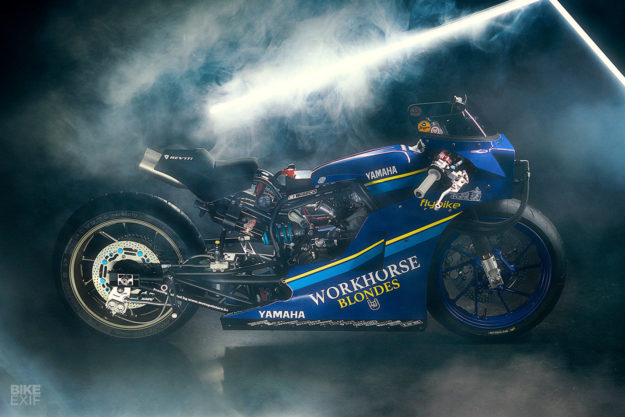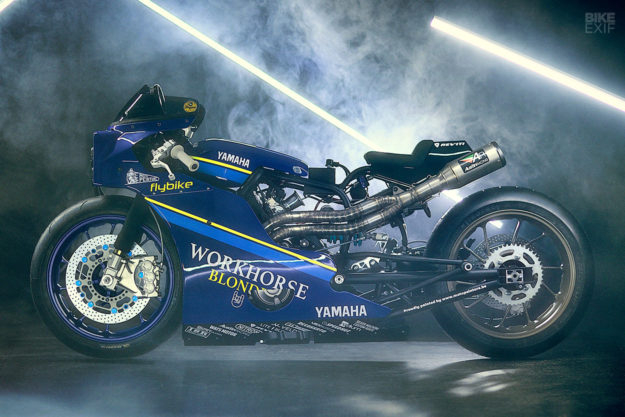
Epic 80s endurance racers and over-the-top sprint bikes both get our motors running here at EXIF. Now Workhorse Speed Shop has just smashed both styles together in one machine—and blown our minds.
This is Sakura, a Yamaha XSR700 destined to compete in the Sultans of Sprint Factory Class. Commissioned by Yamaha Europe as part of their Yard Built program, it was built by Brice Hennebert in his workshop deep in the Belgian countryside.
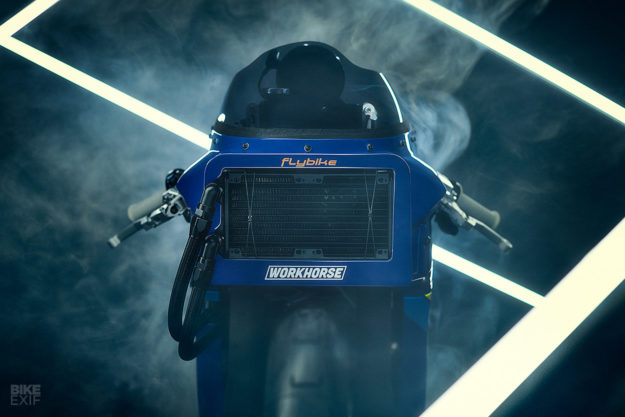
Most European custom fans are aware of the Sultans of Sprint. It’s an 1/8th mile sprint series, running alongside the bigger events on the alt-moto calendar—like the Glemseck 101. The ‘Factory Class’ is designed for bikes with two cylinders or less, liquid cooling, and a maximum power to weight ratio of 0.65 hp/kilo.
You can’t modify the frame around the engine, and you can’t extend the swing arm by more than 20 percent. But for everything else, you can go loco—which is exactly what Brice did.
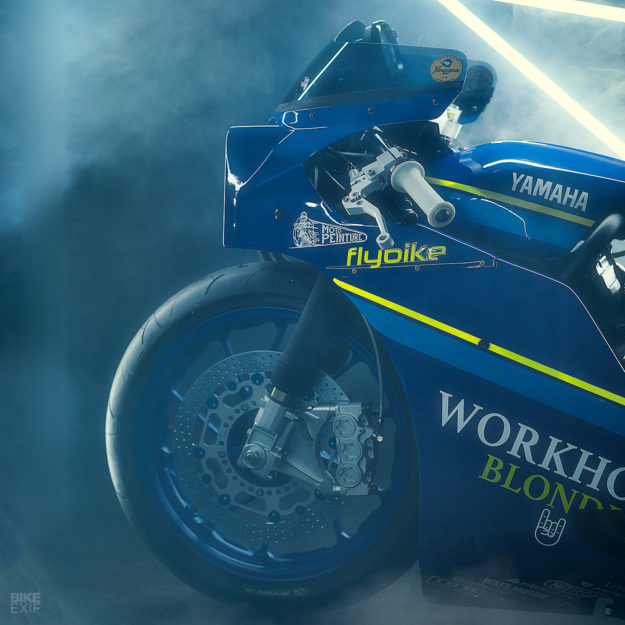
“For inspiration, I love to dig into the brand history of a donor bike,” Brice tells us. “Here, I had to build something ‘violent’ for drag racing, and I fell in love with the 1985 Yamaha FZR750 “Gauloises” Bol d’Or racer, from the Sonauto team. The square flat face, combined with a full fairing, is an 80s blast.”
Brice wanted to recreate the 750’s distinct fairing—but needed a solid reference to work from. Reproduction parts are virtually non-existent, and there are surprisingly few photos on the web with enough detail to study. So Brice bought a scale model of the cigarette-liveried racer, and eyed it out from every angle.
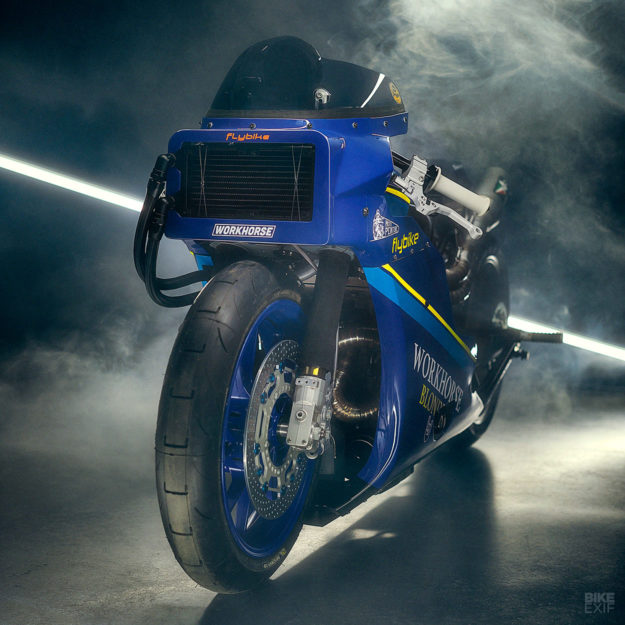
He then shaped his own aluminum version of the fairing, attaching it to the XSR700 via custom-made brackets. Since there’s no need for a headlight, the cooler was relocated to sit front and center.
The seat’s another one-off aluminum piece, capped off with upholstery from Jeroen at Silvermachine in Amsterdam. It sits atop a custom subframe, fashioned from 20 mm chromoly steel tubes.
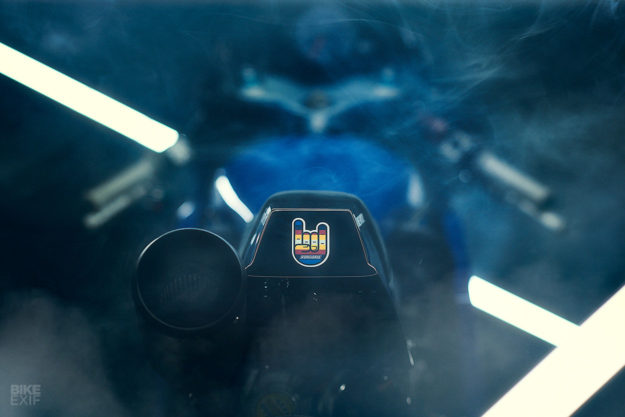
The stock fuel tank on a Yamaha XSR700 is actually a steel reservoir, hidden under two aluminum panels and joined via a center strip. Brice ditched the actual fuel cell, and relocated the electronics in its place. Then he welded the two panels together, and mounted them flush with the frame.
So where does the fuel go now? There’s a hand-made aluminum tank hiding behind the belly pan. It holds a whopping two liters—good enough for a quick blast down the drag strip.

Chassis upgrades include the forks from an old Yamaha R1, slammed right down. “For drag racing, a fork is not really useful,” Brice quips. “The build is about 150 mm lower than OEM, and the oil pan is 50 mm above the ground. So it’s drag race only!”
Out back is a one-off chromoly swing arm, built at precisely 20 percent longer than stock. It’s connected to a Nitron R3 shock, built up especially for drag racing. The swing arm linkage, rear caliper bracket and chain tensioner were all machined by Christian at USV Racing. “He saved my life a few times with incredible production times,” says Brice.
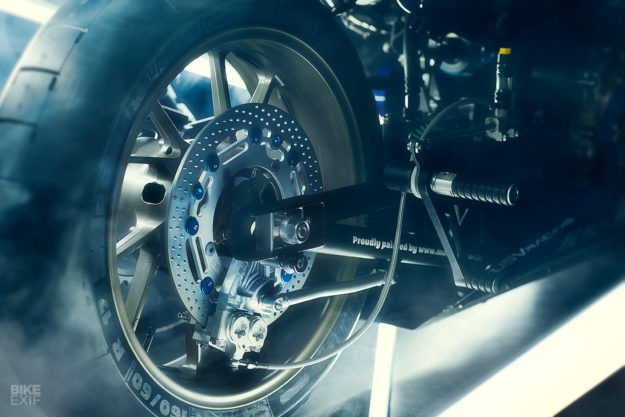
There’s a lot going on with Sakura—too much to take in all at once. Just in front of the back wheel is a mandatory oil catch can, a black box made by Radium Engineering. Look under the seat, and there’s a NOS bottle, solenoid and purge.
Between the seat and fake tank, you’ll find a racecar battery from Liteblox. It’s a nifty piece of gear—connected to an app that monitors voltage and has a built-in kill switch.
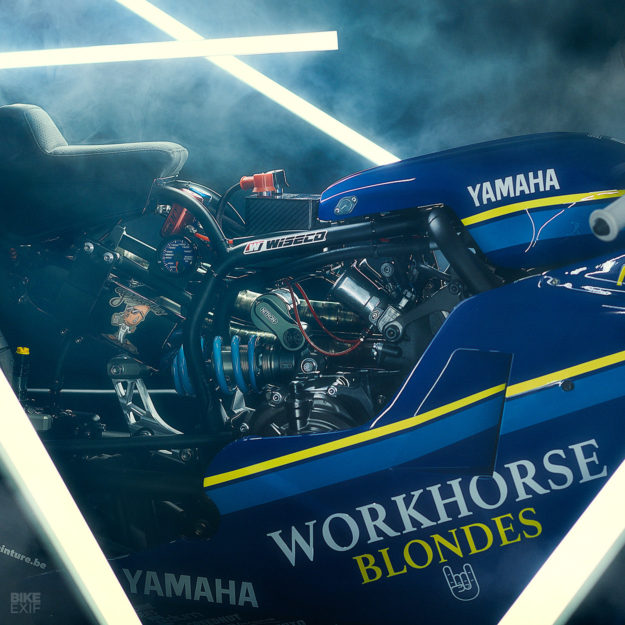
There’s even an electromagnetic gear shifter in the mix. An 1/8th mile flies by quickly, and missed shifts mean lost milliseconds. So rather than muck about with a foot lever, Brice now shifts via two buttons on the left side of the bars.
On the right side, one button starts the bike, while another releases the happy gas. The control area is functional to the max: clip-ons, a clean top triple clamp, ISR controls and a custom-skinned Speedhut tacho.

If that’s a lot to digest, the work you can’t see will floor you. Brice handed the engine to his friend, Fabian Lamy from Flybike, who happens to be based nearby. “This guy is a race engine wizard,” says Brice. “He made a huge effort—about 130 hours on the XSR engine.”
Every part’s been balanced, oil flow’s been increased, and even the fuel injection body’s been machined for higher flow. Other highlights include custom-made camshafts, titanium valves, and Wiseco forged and balanced pistons. A stainless steel pie-cut exhaust system runs the length of the bike, ending in an Austin Racing muffler (“for that ‘race shit’ touch”).
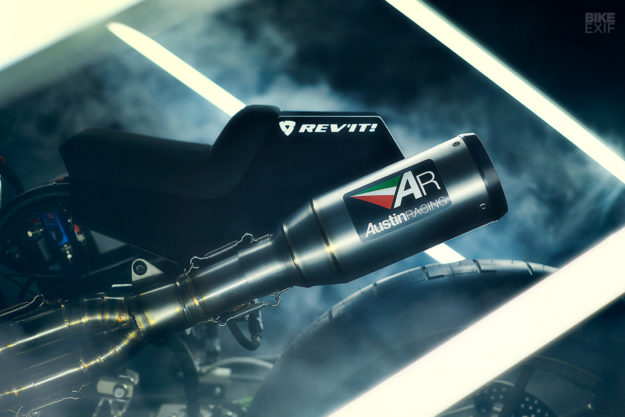
Fabian also added Carillo rods, balanced the crankshaft, removed the counterweight, and installed a Suter anti-hopping clutch. The XSR now tops out at about 12 000 rpm, and the engine weighs just 52.2 kg. Then there’s the NOS—a Wizard of NOS 150 Pro Series system, with a Max Extreme V2 controller.
Brice hadn’t popped Sakura on the dyno by the time we went to print, but he’s reduced the weight by over 40 kilos compared to the showroom bike, down to 138 kilos (304 pounds). More importantly, he’s got a banging paint job to match the nuts-o spec, executed by Motopeinture.
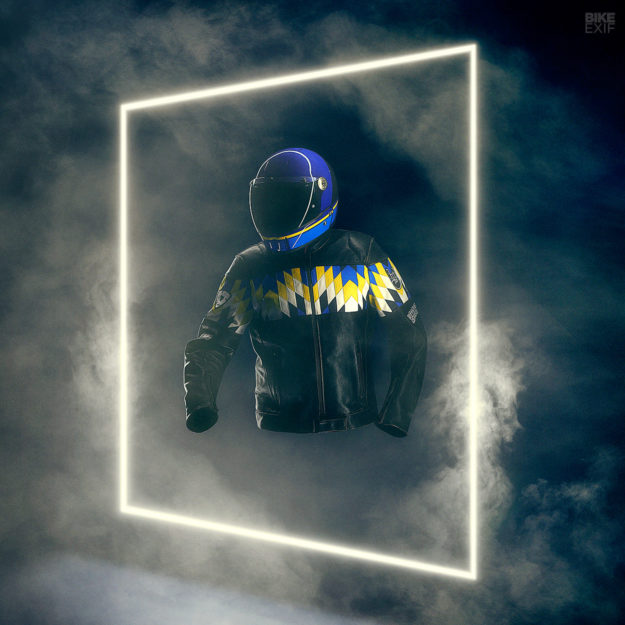
And thanks to REV’IT! and Veldt, he’ll be kitted out in matching gear when he takes to the track. Now that’s attention to detail.
Workhorse Speedshop | Facebook | Instagram | Images by Operation Panda
